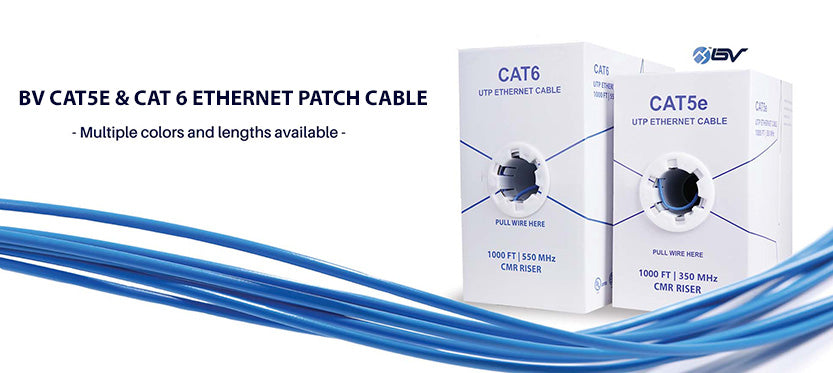
RG59 Coaxial Cable vs. Network Cable: Choosing the Right Option for Your Networking Needs
Welcome back to our blog! Today, we will be discussing two commonly used types of networking cables: RG59 coaxial cable and network cable, also known as Ethernet cable. Both cables serve different purposes and have their pros and cons. In this guide, we will explore the characteristics of each cable and help you make an informed decision for your networking requirements.
RG59 Coaxial Cable: RG59 coaxial cable has a long-standing history and finds applications in various fields, including CCTV systems and video transmission. It offers excellent signal quality, making it suitable for transmitting video signals over long distances without degradation. The shielding of RG59 cables protects the signal from external interference, ensuring a stable and clear transmission. Moreover, RG59 cables are cost-effective, making them an economical choice for video-intensive applications. However, they have limited bandwidth capacity and are bulkier compared to network cables, which may pose installation challenges in tight spaces.
Network Cable (Ethernet Cable): Ethernet cables have become the standard for wired internet connections and local area networks (LANs). They offer high-speed data transfer capabilities, particularly in the Cat5e, Cat6, and Cat6a variants, enabling faster internet connections and seamless network performance. Ethernet cables are versatile and support various applications such as internet connectivity, video streaming, online gaming, and file sharing. They are relatively thin and flexible, making installation easier even in tight spaces. However, Ethernet cables have a limited distance range and are more susceptible to electromagnetic interference if not properly shielded or routed near power lines.
Conclusion: When choosing between RG59 coaxial cable and network cable (Ethernet cable), it's crucial to consider your specific needs and use case. RG59 coaxial cable is ideal for video applications, surveillance systems, or CCTV setups, offering excellent signal quality, interference protection, and cost-effectiveness. On the other hand, Ethernet cables like Cat5e, Cat6, or Cat6a are suitable for high-speed data transfer, internet connectivity, and local network setups. They provide versatility, easy installation, and support for a wide range of applications.
Consider factors such as distance limitations, potential interference, and your specific requirements to make an informed decision. Whether you opt for RG59 coaxial cable or network cable, BV Security has a wide range of reliable options to meet your networking needs.
Thank you for reading our guide comparing RG59 coaxial cable and network cable. We hope this information has helped you understand the differences and choose the right cable for your networking requirements. For more informative content on networking solutions, don't forget to subscribe to our blog. Stay connected!
Our Products and Services:
-
PoE Switches: Explore our wide range of managed and unmanaged PoE switches and 30/60/90W injectors designed to meet your networking needs. Choose from our collection at BV Security PoE Switches.
-
Hard Drives: We are proud to partner with Western Digital (WD) to offer high-quality Purple and Purple Pro hard drives. Ensure reliable storage for your security camera systems by browsing our selection at BV Security Hard Drives.
-
Security Cameras: Discover our diverse surveillance solutions, including HD Analog cameras, IP cameras, and Network Video Recorders (NVR). Enhance your security infrastructure with our range of products available at BV Security Cameras.
-
Amazon Store: Check out our official Amazon store for easy and convenient online shopping. Explore our products and shop with confidence at BV Security Amazon Store.
For more informative content, product demonstrations, and expert tips, visit and subscribe to our BV Security YouTube Channel. Stay up to date with the latest advancements in security technology.
